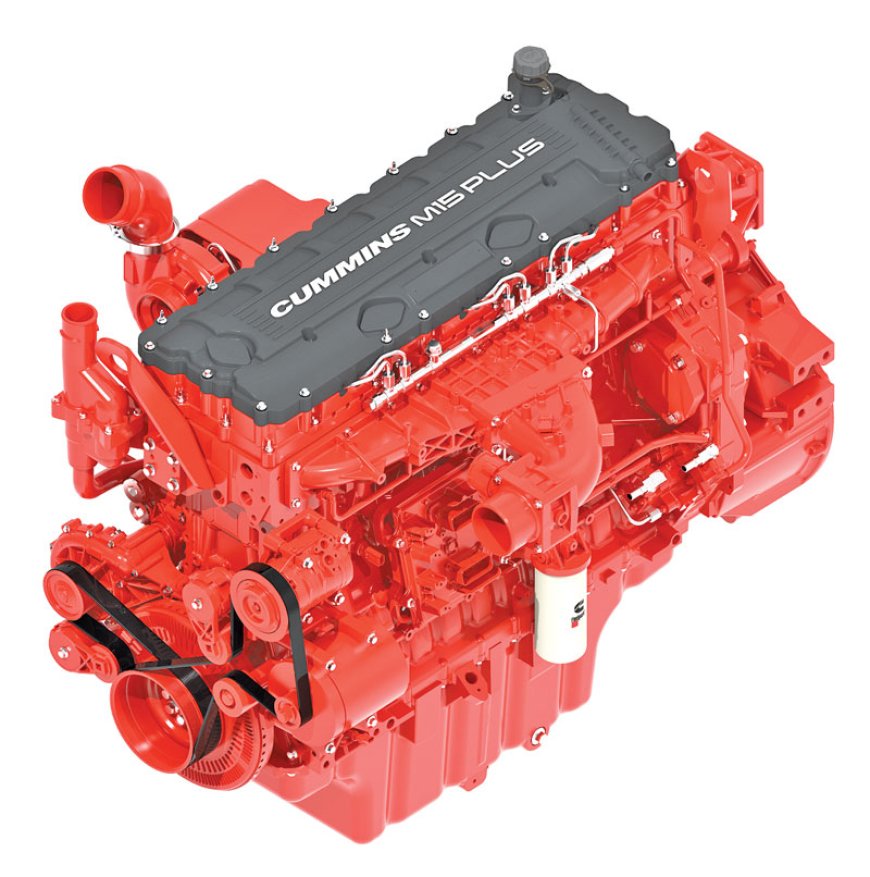Cummins a global technology leader in power solutions, constantly invest in reducing the environmental impact of Diesel engines.

Nitin Jirafe, Engine Business Leader, Cummins India
What types of engines does your company manufacture for construction equipment?
In India, our rich history spans more than six decades, marked by the successful integration of our global and local technological expertise across a diverse range of off-highway applications. We remain committed and focused on delivering tailored, innovative solutions to cater to the local market and diverse customer needs. This dedication drives us to develop fit for market products - that are not just robust and reliable but also competitively positioned. Construction equipment has wide variety of applications and comes in various sizes to meet the specific work requirements.
Cummins offers an array of 4-cylinder and 6-cylinder products, in 3.9 Liter to 15 Liter size, providing wide range of power from 80 hp to 450 hp, thus addressing a wide variety of construction equipment. Further to address specific regulatory needs, these engines are designed dedicatedly to meet non-emissionized to latest emission standards of CEV BSIV and upcoming CEV BS V. To meet latest emission standards, engines need to be closely integrated with advance aftertreatment system. Cummins inhouse expertise and manufacturing of aftertreatment system enables to deliver the best efficiencies and performance from the overall system.
As a technology leader, we constantly upgrade our product to bring the latest technology, enhance performance and meet the latest emission regulations. Cummins showcased its cutting-edge L10 and M15 platforms at EXCON 2023, highlighting the company’s commitment to innovation and industry-specific solutions.

Can you provide details on the emission’s standard compliance for your engines?
Cummins a global technology leader in power solutions, constantly invest in reducing the environmental impact of Diesel engines. Cummins invests more than USD 1bn, globally, in developing new products and innovating technologies to meet current and future emission regulations. Markets like US and Europe have stricter emission standards, which India is fast catching up. With a global engine platform approach and fit for market India development, Cummins in India is bringing engine solutions that are not just compliant to current emissions but capable to future emission standards. Our current product range are CEV BSIV compliant, and these engines are getting upgraded to meet the upcoming BS V norms from January 2025. Also, some of these products continue to serve the lagging emissions as OEMs address the export market requirements from India.
What are the key performance specifications of your engines? (e.g., horsepower, torque, fuel efficiency)
Cummins is dedicated to bringing in products with enhanced horsepower, greater torque and better fuel efficiency, across the range to address the wide requirements of the construction industry. These latest generation of engines with electronic controls, delivers 5-10% better fuel efficiency compared to the mechanical engines used in the past. The product specification of our latest offerings are as follows:
The B4.5 CEV BSIV compliant and CEV BS V capable engine offers a horsepower rating ranging from 121hp to 173hp with 500nm to 720Nm torque. This engine is known for providing excellent fluid economy when compared to 6-cylinder engines. It has successfully undergone over 18,000 hours of testing and field validation in India. The B6.7 is Cummins’ highest-selling product worldwide. It is CEV BSIV compliant and CEV V capable, providing 173 to 260 horsepower with 880Nm to 1140Nm torque. The B6.7 engine provides excellent performance, reliability, and total cost of operation in this power range. Over 13 million of these engines have been sold globally and in India we have sold more than 2.7 lakh of these engines for On Highway applications proving its performance and reliability.
Further the upcoming platforms of L10 and M15, are capable to address both the unregulated and latest CEV IV emission standards. These engine with best-in-class power density, will provide great than 400hp and more than 2000Nm torque, making it a robust and heavy-duty option.

How do your engines fare in terms of reliability and durability under rugged construction site conditions? What measures do you take to ensure optimal performance and longevity of your engines?
At Cummins, we believe that tough terrains require tougher equipment, and we pioneer in making construction engine systems in the industry. Our construction engines are renowned for their durability and reliability, delivering responsive power with minimal maintenance costs. Our extensive global experience helps us to understand application specific operating conditions. The B4.5 and B6.7 electronic engines have already proven their mettle across various global construction sites and applications. At Cummins, during product development we use leverage simulations base designing and extensive validations (inhouse and on customer machines in real environment) to prove durability and reliability before launching new products. This translates to maximum uptime and the best total cost of ownership for our customers.
How do you envision the future of engines in construction equipment evolving?
Focus on productivity, adoption of digital solutions and addressing climate change are the key three trends that will shape the future requirements of the construction equipment industry. Government focus on rapidly developing infrastructure, is driving need for timely execution of the projects. To enable the same, efficient construction equipment with adequate power and reliability is required to ensure maximum productivity. Cummins higher power density engines, along with introduction of latest L10 and M15 will help provide OEMs the option to launch bigger and more productive equipment. Further introduction of electronic engines enables OEMs to introduce telematics enabled digital solutions which ensures adequate tracking, uptime and reliability of the products thereby delivering productivity.








